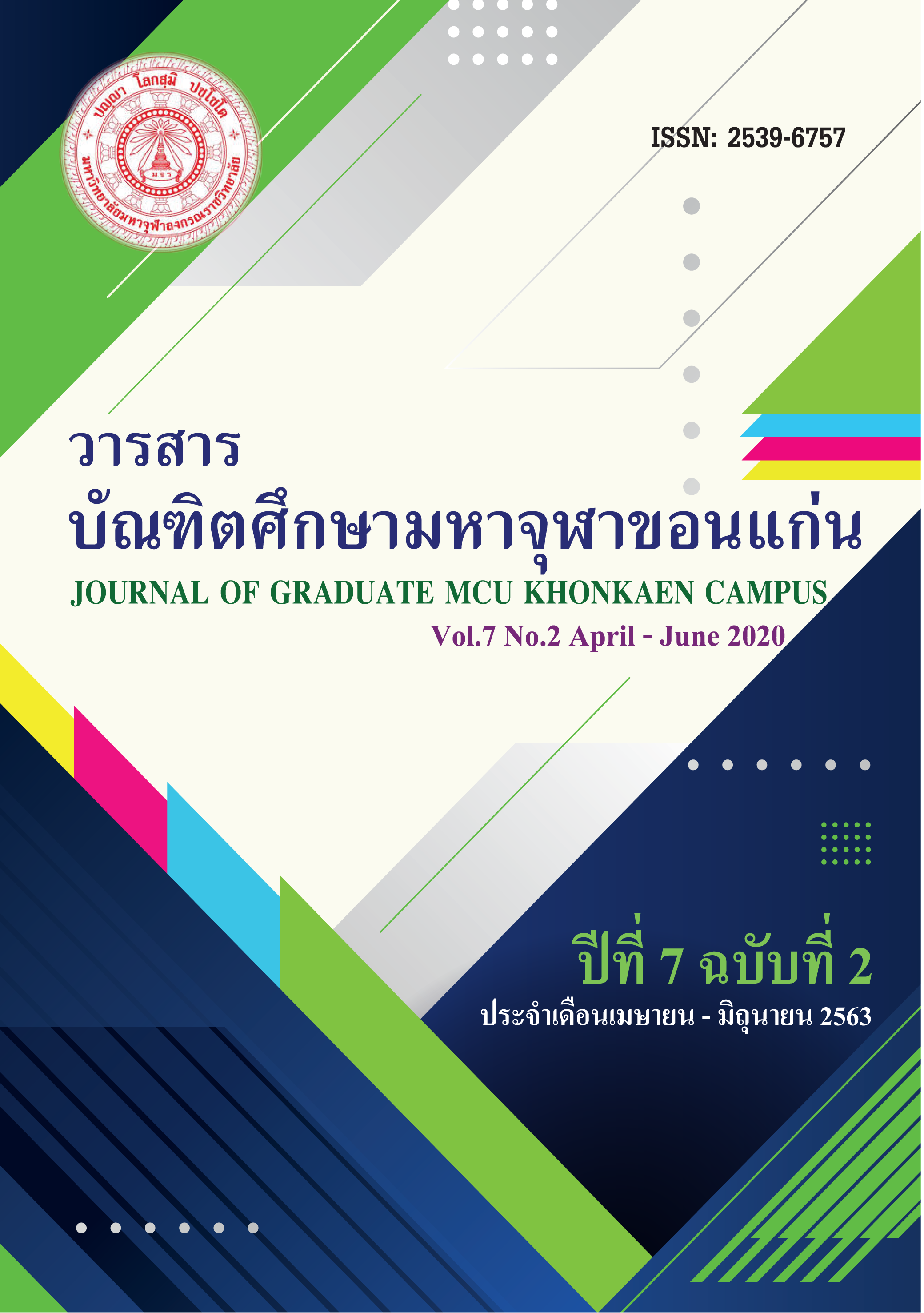PHILOSOPHICAL INTERPRETATION IN ISAN PHAYA
Main Article Content
Abstract
The purpose of this research is 1) to study the general characteristics of Phaya Isan 2) to study the concepts and theories of Hans-George. And (3) to study the interpretation of Isan in philosophy. Is a documentary research by collecting data from primary documents And secondary documents Then the data obtained was analyzed using descriptive methods Inductive method
The research found that,
1) Isan proverbs are the principles of teaching of the ancient people that have various strategies To make people believe and remember easily without forgetting Sometimes Phaya appears in folk tales. Or appear as short messages There is a melodious sound that is embedded in the philosophy of the dimension, there are additions, adaptations to the situation and can be used for life. There are 15 categories, beginning with the eating And the last section on the Dharma category, etc.
2) Hans-Georg Gadamer's interpretation theory uses dialectic, which has 3 important principles: 1) Understanding 2) Explanation or interpretation (Interpretation) or translation (Translation) and 3) Application (Explication As for the Nettipakorn as an interpretation tool, with 16 main principles, and in this interpretation, the proverbs only choose division As an instrument of interpretation.
3)Applying Hans-George Gadamer's interpretation theory to interpretation in proverbs It made him aware of the intention of the author of the script of proverbs that there are hidden philosophical concepts in each chapter of each chapter. And able to apply the concepts contained in the proverbs to apply them in their lives effectively. And when using the Nettipakron as an interpretation tool, especially in the 16 divisions, we understand the Buddhist doctrine that has been compiled in the proverbs And when using the interpretation method, the concepts in the dimension of metaphysics And Buddhist ethics. And when using the interpretation method, the concepts in the dimension of metaphysics And Buddhist ethics.
Article Details
References
Phra Thammapidok (Por. Payutto). (2002). Buddhism and Guidance. 7th edition: Educational and Professional Counseling Center, Department of Education, Ministry of Education.
Preecha Pinthong. (1985). Isan Ancient Panya. Ubon Ratchathani: Siritham.
Pramuan Pimson. (1998). Explain Phaya. Khon Kaen: Klang Nana Witthaya.
Pornsawan Suansri. (2004). "Value Analysis of Existence and Inheritance of Isan". Thesis Doctor of Education. Graduate School: Chulalongkorn University.
Prayong Saenburan. (2005). Philosophical interpretation of Isan. research report. Department of Philosophy and Religion, Faculty of Humanities and Social Sciences, Khon Kaen University.
Potjanee Pengchang. (2000). Khamphaya and Isan lifestyle: Analytical study. Bangkok : Office of the National Culture Commission.
Samlee Rak Suthee. (2010). Phaya Philosophy, an invaluable way of life for Isan people. Bangkok: Thanatakarn Printing.
Swing Bun Jerm. Phaya. (1994). Northeastern Heritage texts. Ubon Ratchathani: Northeastern Heritage Publisher.
Udom Buasri. Phaya Kom. (1985). Philosophy of life in Isan people. Khon Kaen: Office of Art and Culture Promotion Khon Kaen University.

